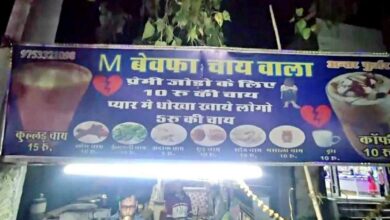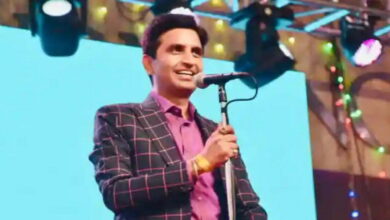Tough times for regional parties

There has been a lot of discussion that history is repeating itself and just as Congress was the central force of Indian politics for decades after independence, similarly BJP is now the central force of Indian politics and will remain so for decades. Prashant Kishor, the election strategist and running the Suraj campaign in Bihar, presented a theoretical outline of this, after which many political analysts sympathetic to the opposition parties called him a BJP man. But they are not wrong in their interpretation. Like the post-independence Congress, today the BJP is the central force and the country’s politics revolves around it. Even if she loses in the coming elections, it is not going to end or she is not going to weaken in the near future. It will remain the central force for the next several decades and will take time to be replaced.
On accepting this fact, it is also visible that in another case history is repeating itself. When the Congress was the central force of politics, there were many political parties in the country and a strong leader with a large ideological base. But there was no position in front of Congress. For the first two decades, only the leaders of the Socialist or Swatantra Party who came out of the Congress were doing politics parallel to the Congress. Later, when the Congress began to weaken, regional parties emerged. The Bharatiya Jana Sangh was a mainstream party at that time, but its base was very limited. That is why it seems that with the strengthening of BJP, the strength of all other national and regional parties is decreasing. There may be some exceptions to this but there is no hesitation in saying that the time is not good for the regional parties. However, this does not mean that all parties except the BJP will die out, as claimed by BJP national president JP Nadda during his party’s program in Bihar. Even during the time of Congress, apart from the Bharatiya Jana Sangh, there was a strong base of communist parties and the expansion of the Socialist and Swatantra Party was also in the whole country.
However, whether under a well-planned plan or due to natural political momentum, regional parties are becoming weak in many states. This is especially visible in North India. The Bahujan Samaj Party, which once ruled the country’s largest state Uttar Pradesh, is going through a very difficult phase. Only one BSP MLA could win in the assembly. Think, the party whose rule ended only 10 years ago, that party should be reduced to one MLA! It can be said that if the BSP did not create a democratic set-up of the organization, it was bound to be the fate of the party based on the miracle of a leader. But this is not the only reason behind the weakening or marginalization of the BSP. BJP’s politics of grabbing his vote bank is also responsible for this. Knowing this fact, he indirectly helped the BJP in the last assembly elections. Obviously, the reason for this must have been something else, about which people are not aware.
The weakening of regional parties is also being explained in the form that all the allies of the BJP, they have been weakened or eliminated by the BJP itself. Janata Dal U in Bihar is an example of this. While staying with him, the BJP gave support to the leader of Lok Janshakti Party, Chirag Paswan and he caused great harm to the JDU by fielding a candidate against it. Riding on the shoulders of JDU, BJP became the number two party and JDU is struggling for its existence. But JDU understood this plan of BJP in time and broke ties with it and reconciled with RJD, a party which emerged out of like-minded Mandal politics. On the other hand, the condition of Shiv Sena in Maharashtra is similar to that of JDU. Riding on the shoulders of Shiv Sena, BJP has become the number one party there and Shiv Sena is battling for survival. The BJP has made Eknath Shinde the Chief Minister by forming a separate faction of its MLAs. Same is the situation of Akali Dal in Punjab. There BJP played politics riding on the shoulders of Akali Dal and in the recently held Sangrur Lok Sabha by-election, Akali Dal came fifth, while BJP came fourth. Similarly, BJP is doing Tamil Nadu politics riding on the shoulders of Anna DMK and the party is facing the biggest crisis in its history. In Jharkhand, BJP’s old leader Babulal Marandi’s party has merged with the BJP and the other ally AJSU’s existence remains the same.
The campaign launched by Prime Minister Narendra Modi against dynastic or dynastic parties is not accidental, but part of a strategy to eliminate regional parties. An ideological base is being created to weaken all such parties, whose leadership is in the hands of one leader or one family. BJP is eyeing all such parties and it has to get their vote base. Before that, if possible, in some way his organization and its big leaders have to be taken along. From JDU in Bihar to BSP in Uttar Pradesh, Biju Janata Dal in Odisha, Anna DMK in Tamil Nadu, Shiv Sena in Maharashtra, JDS in Karnataka, names can be taken. BJP has prepared itself for this. If it has increased the strength of the organization, it has also increased the power of resources. So it has become easy for him to merge like-minded parties into himself.
It is also happening in many places that both BJP and Congress together are weakening the regional parties. Like in Karnataka, both are eyeing the JDS, while in Haryana both the parties are keeping an eye on the parties of Omprakash Chautala’s family. In Chhattisgarh, the Congress has almost destroyed the party formed by Ajit Jogi, while in Rajasthan, it has got all the MLAs of Bahujan Samaj Party included in its party. Though the Congress’s efforts are in a very limited area, while the BJP’s efforts are pan-India.






